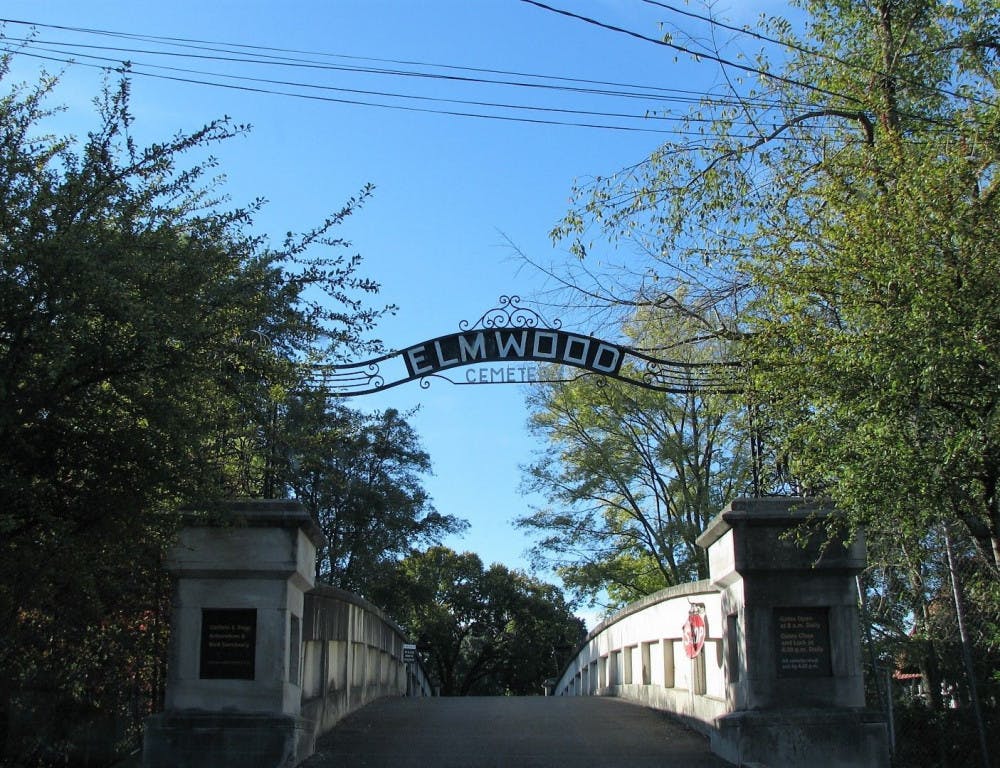One cannot separate Elmwood Cemetery's identity from its age — that much is clear to Kim Bearden, the cemetery's executive director. Opened in 1852, just over 30 years after Memphis' founding, it is the oldest cemetery in the city.
Over 75,000 people have been buried there throughout its 170-year history, with veterans from every war Americans have fought in. Yes, even a Revolutionary War veteran is interred within Elmwood Cemetery's 80 acres.
Although not one of Memphis' original cemeteries, which were located downtown and in a state of disrepair when Elmwood came to fruition, many of the oldest burials have been reinterred at the historical site. Those downtown cemeteries have long since been closed.
"Some of the earliest people to have lived in Memphis are buried here. But that's why you can't separate the [cemetery from its age]," Bearden said. "Elmwood reflects our culture — the people who made us what we are today are represented here, and we talk about them a lot."
Memphis culture is reflected in a duality of great achievements and great tragedy, all of which can be found in the cemetery. The site's "No Man's Land" monument stands in tribute to the 1,500 yellow fever victims buried in unmarked graves throughout Elmwood Cemetery. A monument to the over 300 slaves buried on the grounds can be found as well.
Contrasting the horrors of slavery and the yellow fever epidemics are some of Memphis' most famous, such as Sister Thea Bowman — a Catholic nun, educator and musician who is being
considered for canonization. She would be America's first Black saint if she makes it through the final three steps of canonization — she has already passed the first.
The cemetery is also a home for some of Memphis' unsolved mysteries and infamous people. A monument to Jasper Smith, the focal point of Memphis' longest-standing missing-persons case, can be found almost immediately after crossing the bridge.
Smith, a wealthy Memphian, disappeared one night in May 1899 after visiting a saloon named Whiskey Chute. Although his body was never found, a monument was commissioned by his sisters to stand in his honor.
The cemetery was also the original burial place for one of Memphis' most controversial and divisive figures, Nathan Bedford Forrest. Although buried in Elmwood Cemetery in 1877, he and his wife were later exhumed and reinterred at Forrest Park — now known as Health Sciences Park — in 1904. Last summer, the Confederate general, slave trader and first Ku Klux Klan leader was exhumed again after the equestrian monument was removed from the park.
Although many high-profile Memphians can be found throughout Elmwood Cemetery, Bearden said the site is not exclusive to the rich and famous.
"Everybody who's buried here has a story. And because it is not an exclusive cemetery, it's not just for the wealthiest people. It's for all people. We have access to those who have really changed the course of Memphis history in so many different ways," Bearden said.
Along with the many Memphians buried on the grounds with their relatives, the cemetery is also home to 66 different species of trees — totaling over 1,400 trees throughout the 80 acres.
That high concentration of trees, qualifying Elmwood Cemetery as a level three arboretum, caused the cemetery to close its grounds to the public with tree branches falling due to the ice storm caused by Winter Storm Landon. The grounds reopened Feb. 22 after cleanup crews worked for almost three weeks to clear paths, headstones and monuments.
"There was no structural damage and none of the stones were damaged," Bearden said. "Which is crazy. But the southern magnolias have long legs (branches), but their legs (branches) are typically not very heavy. So they're going to fall, but they're not going to hurt anything."
With no damage to the grounds and buildings, many of which are listed on the National Registry of Historic Places, Bearden said it was only a matter of time to clear the 80 acres of land of the fallen debris.
Elmwood Cemetery's buildings are not alone in being on the National Registry of Historic Places, but so are the entire grounds and some of its monuments. The Morgan Bridge entrance from Dudley Street, which was built in 1904 and is slated for renovation in the near future, is also included. Bearden said guests feel transported to a bygone time when they cross under the Elmwood arch.
"Arches represent an invitation to come into a new world and entering into a new place," she said. "So when you're out and in old cemeteries, you may see monuments that have like maybe two obelisks that are joined by an arch and that's an invitation to enter. I'm pretty confident that symbolism comes across to our guests."
With the cemetery returning to business as usual, a myriad of tours, lectures and events are slated for the coming weeks and months. Bearden said the most popular tours involve scandals and true crime, but Elmwood Cemetery also offers music tours, Civil Rights era tours and tours explaining the history and people behind many of the street signs around Memphis.
"Elmwood is the place where you start to get to know Memphis," she said. "If you are new to the city, start at Elmwood. You will learn so much that will send you out on your journey of understanding Memphis, but you really do need to start with the history of Elmwood Cemetery."
Elmwood Cemetery is Memphis' oldest cemetery. Many of Memphis' most high-profile and infamous are buried within its 80 acre grounds.






